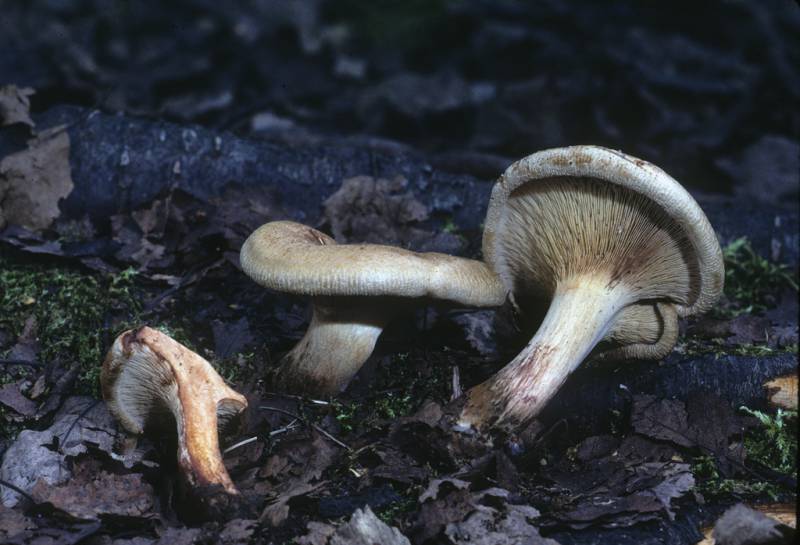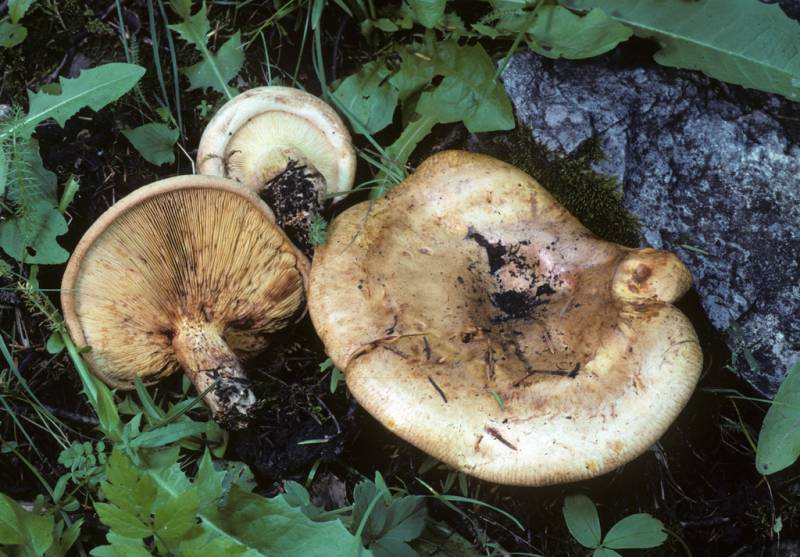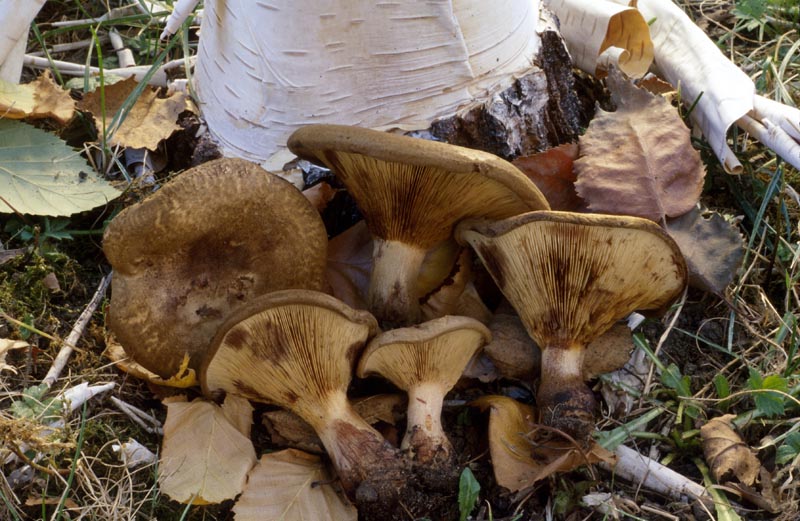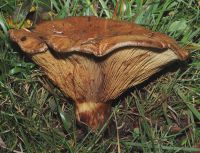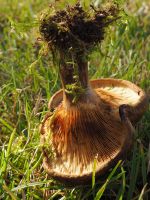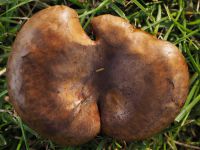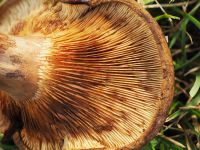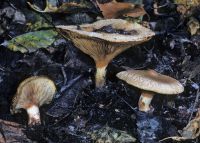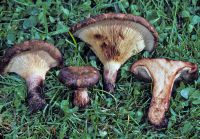Habitat: P. involutus occurs in natural forest in our region but is not common there. It is much more common and abundant in parks and landscaped areas, where it is typically associated with birches, often along with Leccinum scabrum and Lactarius plumbeus
Conservation Status: Not of concern
Edibility: Species of Paxillus can cause hemolysis (destruction of red blood cells) if eaten repeatedly, and have been responsible for deaths in Europe. Therefore, they should be strictly avoided as edibles.
Species of Paxillus can cause hemolysis (destruction of red blood cells) if eaten repeatedly, and have been responsible for deaths in Europe. Therefore, they should be strictly avoided as edibles.
Paxillus involutus is a medium to large species characterized by a yellowish brown to olive brown or reddish brown cap that often is coated with soft matted hairs at first. The species epithet comes from the persistently inrolled cap margin. The gills are decurrent, yellowish to yellowish brown, and the stipe is similar in color to the cap. All parts of the fruitbody stain brown to reddish brown when handled or in age. .
PNW Herbaria: Specimen records of Paxillus involutus in the Consortium of Pacific Northwest Herbaria database
CalPhotos: Paxillus involutus photos

